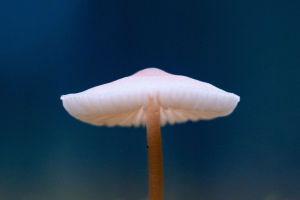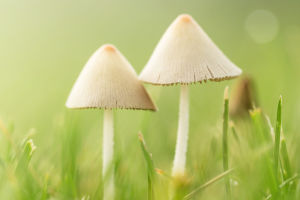Peonies, with their lush petals and captivating fragrance, are one of the most beloved flowers around the world.
Known for their beauty, longevity, and rich history, these blooms are more than just a favorite in gardens and bouquets.
Whether you are a gardener, flower enthusiast, or someone intrigued by the cultural significance of flowers, peonies hold a special place in the world of flora. Let's explore what makes peonies so special, delving into their unique characteristics, history, symbolism, and more.
1. Stunning Variety of Colors and Forms
Peonies are celebrated for their wide range of colors and forms. From soft pastel pinks and whites to deeper hues like reds and yellows, they offer an extensive palette that appeals to various tastes and garden aesthetics. There are three main types of peonies: herbaceous peonies, tree peonies, and intersectional peonies (Itoh hybrids).
Herbaceous peonies are the most common, with large, fragrant blooms that die back to the ground each winter. Tree peonies, on the other hand, are woody shrubs that retain their structure throughout the year. Intersectional peonies are hybrids that combine the best traits of both herbaceous and tree peonies, offering vibrant colors and hardiness.
The form of peonies also varies, from single blooms with delicate petals to double blooms, which are dense and full. The diversity in both color and structure is part of what makes peonies so special, giving them versatility in gardens, floral arrangements, and home décor.
2. Incredible Fragrance
One of the most distinctive features of peonies is their fragrance. Their scent ranges from sweet and soft to rich and spicy, depending on the variety. This makes them a popular choice for perfumes and scented products. A peony’s fragrance can evoke memories of spring and summer, making it a cherished addition to gardens and bouquets alike. The peony's ability to fill a space with its delightful fragrance sets it apart from many other flowering plants.
3. Longevity and Resilience
Peonies are renowned for their longevity. Once established, they can thrive for decades with minimal care. It’s not uncommon for a peony plant to live for over 50 years, and in some cases, even up to 100 years. This resilience makes them a favorite for gardeners looking for a long-term investment in their flower beds. Peonies are also quite hardy, thriving in temperate climates and withstanding cold winters. They bloom in late spring to early summer, bringing bursts of color when many other plants are just starting to wake up from winter dormancy.
4. Cultural and Historical Significance
Peonies have a rich cultural history, especially in Eastern cultures. In China, where they originated, peonies are known as the "king of flowers" and have been cultivated for over 2,000 years. They are a symbol of wealth, honor, and beauty in Chinese art and literature, often associated with royalty and high social status. Tree peonies, in particular, were revered by the emperors, and their cultivation was reserved for the elite.
In Western cultures, peonies are commonly associated with romance and love, which is why they are often used in wedding bouquets and romantic floral arrangements. In the language of flowers, peonies can symbolize prosperity, good fortune, and a happy marriage. Their lush blooms and luxurious appearance have long made them a favorite flower in European and American gardens as well.
5. Symbolism and Meaning
Peonies are loaded with symbolism, making them a meaningful flower for various occasions. In addition to love and romance, peonies symbolize honor, beauty, and abundance. In the context of weddings, they are often seen as a symbol of a happy marriage and a prosperous future. For this reason, peonies are a popular choice for bridal bouquets and wedding decorations.
In Eastern cultures, especially in China and Japan, peonies are associated with wealth, honor, and bravery. The flowers are often depicted in traditional artwork and are a favorite subject in Chinese New Year celebrations, representing a fresh start and good fortune.
6. Peonies in Art and Literature
The beauty of peonies has been captured in art and literature for centuries. In Chinese and Japanese art, peonies often appear as symbols of prosperity and elegance. They are a common motif in paintings, textiles, and ceramics, symbolizing both the fleeting beauty of life and the eternal cycle of renewal. In Western literature, poets and writers have long been captivated by peonies, using them as metaphors for love, beauty, and transience.
Claude Monet, the famous French impressionist painter, featured peonies in several of his works, capturing the vibrant colors and textures of the blooms in his distinctive style. The flower's significance extends beyond its physical beauty, embodying emotions and themes that resonate across different cultures and artistic forms.
7. Gardening with Peonies
For gardeners, peonies are a delightful challenge. While they require patience, as they may take a few years to bloom fully, the results are well worth the wait. Peonies thrive in well-drained soil and need a spot that receives full sun for most of the day. Once planted, they are relatively low maintenance, needing only occasional watering and deadheading to promote healthy growth. Their ability to flourish in the same spot for decades makes them a rewarding choice for anyone looking to add lasting beauty to their garden.
Peonies are also deer-resistant, which makes them an excellent choice for gardeners in areas where deer are a problem. They are perfect for flower beds, borders, and even as standalone plants, thanks to their large, showy blooms and attractive foliage.
Peonies are special for many reasons. Their stunning variety of colors, forms, and fragrances, combined with their longevity, make them a favorite among gardeners and flower enthusiasts alike. Their rich cultural history and symbolism add depth to their beauty, making them more than just a pretty flower. Whether planted in a garden or arranged in a bouquet, peonies have the power to captivate and inspire, embodying love, honor, and prosperity in every petal.


